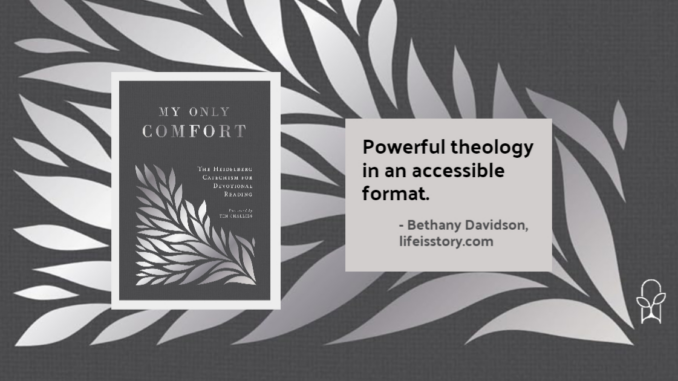
Published by P & R Publishing on August 14, 2024
Genres: Non-Fiction, Christian Life, Devotional, Theology
Buy on Amazon
Goodreads

The Heidelberg Catechism is poetic, pastoral, and comforting, but the Q&A format can undercut devotional reading. This beautiful edition adapts the rich content to stand on its own without introductory questions. Includes a foreword by Tim Challies.
“Rather than reading as a long series of questions and answers, [the Catechism] now reads as a kind of poetic devotional. And it works well! I trust and I pray that this will spark a new wave of interest and help a new generation to both read and benefit from it.”
—Tim Challies, from the foreword
This book presents the Heidelberg Catechism in a format designed for devotional reading. Because the original Q&A format is more of a call-and-respond experience and doesn’t feel natural for personal reading, the editor has split up the content of the catechism into readings for different days, formatting each section like poetry. This creates a better sense of flow. The editor, Amanda Martin, made thoughtful decisions of how to structure and format the readings, and she preserved the content of the questions as part of the reading, even though they’re no longer phrased as questions.
This book will appeal to Christians who are already familiar with the Heidelberg Catechism, and who would like to read through it in a way that is more suitable for private reading and reflection. This will also appeal to people who are not yet familiar with the content, but who want to enrich their devotional lives with a book of brief but theologically deep readings. This book offers encouragement in the gospel, hope, and deep truths instead of the kind of fluffy self-help content that dominates the contemporary devotional market, and because of this book’s accessible formatting, it can appeal to people who might never otherwise pick up a survey of core doctrine.
The only thing I found disappointing about this book is that it doesn’t include an explanation about what the Heidelberg Catechism is, who created it, or how people have used it throughout church history. There is a brief foreword from Tim Challies that reflects on his experience memorizing this catechism in church, but even though he writes about its value for faith formation, this is a short testament to the value of the catechism, not an introduction to it. This book would be even better if the editor had included an explanation for the uninitiated, explaining this document from church history before jumping into its content.
My Only Comfort: The Heidelberg Catechism for Devotional Reading is an attractive, nice-quality hardcover book that is great for individual reading or use in family devotions, and which explains and reinforces Christian doctrines in an eloquent and memorable way. Although I wish that this book had included an explanation of the document’s history for the uninitiated, I appreciate how this presents the traditional material with a more accessible format and flow.
